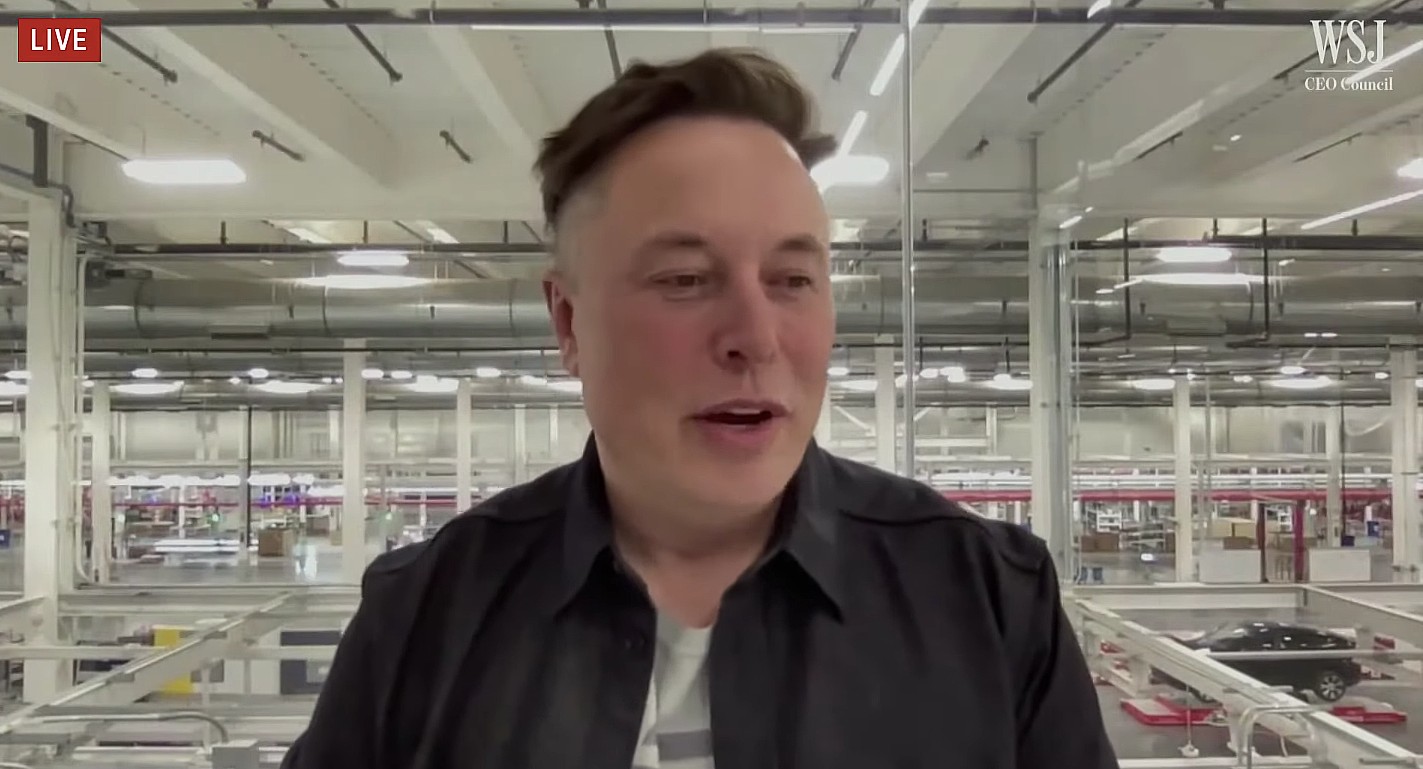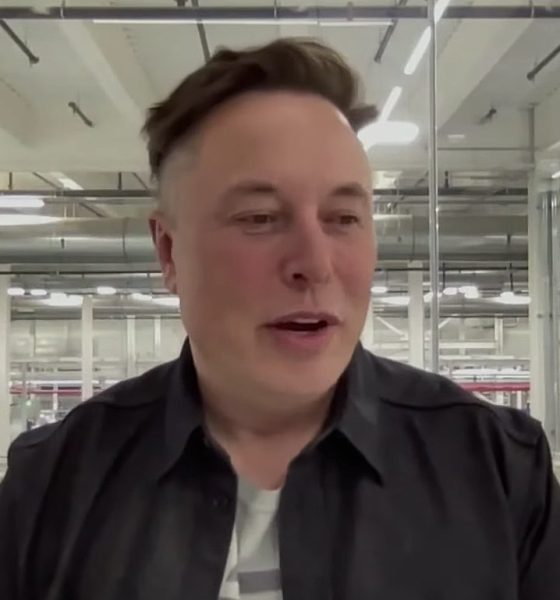

News
Elon Musk is not getting White House invites because advisors fear he might embarrass Biden: report
Recent reports have indicated that there might be a reason why Tesla CEO Elon Musk is not being invited to electric vehicle-focused White House events. As it turns out, Biden’s advisors are quite hesitant to invite the Tesla CEO since they are concerned that Musk might do or say something that might embarrass the US President and his administration.
The insights were recently shared by CNBC, which was able to get comments from both Elon Musk and people reportedly familiar with the Biden administration’s stance on the CEO. Citing over half a dozen people who are familiar with the matter — all of which opted remain anonymous — the publication noted that Biden’s advisors are privately pushing back against inviting Musk to future industry events.
When asked about the administration’s concerns, Musk reportedly sent CNBC an initial reply featuring two “rolling on the floor laughing” emojis. Following this classic Musk response, the Tesla CEO noted that the Biden administration’s concerns are largely unfounded. “They have nothing to worry about. I would do the right thing,” Musk wrote.
While Musk maintained that the idea of a feud between him and Biden is not really that accurate, the US President’s hesitation in mentioning Tesla when discussing America’s EVs — at least until recently — was very notable. This became quite evident when General Motors, a company that Biden deemed as a leader in EVs, delivered a measly 26 electric cars in the fourth quarter of 2021. Tesla delivered over 300,000.
“The notion of a feud is not quite right. Biden has pointedly ignored Tesla at every turn and falsely stated to the public that GM leads the electric car industry, when in fact Tesla produced over 300,000 electric vehicles last quarter and GM produced 26… It got to the point, hilariously, where no one in the administration was even allowed to say the word ‘Tesla’! The public outrage and media pressure about that statement forced him to admit that Tesla does, in fact, lead the EV industry. I wouldn’t exactly call that ‘praise,’” Musk wrote in an email to the publication.
Overall, the White House’s hesitation in inviting Elon Musk to White House events seems to stem from a place of misinformation. Musk, after all, is assertive and bold on Twitter, but he has attended numerous high-profile events in the past without making a fool of himself. In a way, this is the problem when a constant stream of negativity is directed towards a person. Eventually, a picture is painted that depicts the individual as a cartoon villain that is out of control. This is a narrative that, to a point, has been directed at Musk over the years. Coupled with Tesla’s tendency to mostly stay silent when criticized, such a narrative has allowed a vastly misinformed take on Musk to become the norm.
Interestingly enough, Musk actually has supported the president in the past. Prior to Biden taking office as the new US President, Musk noted that he was optimistic about the upcoming administration’s focus on climate change. Musk also lobbied for a carbon tax, though he later noted that he was informed by Biden and his team that a carbon tax was “too politically difficult” to implement. It took some time before Musk admitted that the Biden administration was “not the friendliest administration,” and it took even more time before the CEO’s sharp comments on Twitter against the President started. This, unfortunately, is something that has been lost in the Musk vs. Biden mainstream narrative.
Ultimately, however, the Biden administration is changing. The US President actually mentioned Tesla recently, showing that he at least publicly acknowledges the company’s efforts. A White House spokesperson also praised the EV maker in an email to CNBC, noting that “Tesla has done extraordinary things for electric vehicles, and that’s a big part of why the whole industry now knows EVs are the future.” Comments such as these seemed almost impossible to secure just a few months ago.
Don’t hesitate to contact us with news tips. Just send a message to simon@teslarati.com to give us a heads up.

Elon Musk
Elon Musk’s X will start using a Tesla-like software update strategy
The initiative seems designed to accelerate updates to the social media platform, while maintaining maximum transparency.

Elon Musk’s social media platform X will adopt a Tesla-esque approach to software updates for its algorithm.
The initiative seems designed to accelerate updates to the social media platform, while maintaining maximum transparency.
X’s updates to its updates
As per Musk in a post on X, the social media company will be making a new algorithm to determine what organic and advertising posts are recommended to users. These updates would then be repeated every four weeks.
“We will make the new 𝕏 algorithm, including all code used to determine what organic and advertising posts are recommended to users, open source in 7 days. This will be repeated every 4 weeks, with comprehensive developer notes, to help you understand what changed,” Musk wrote in his post.
The initiative somewhat mirrors Tesla’s over-the-air update model, where vehicle software is regularly refined and pushed to users with detailed release notes. This should allow users to better understand the details of X’s every update and foster a healthy feedback loop for the social media platform.
xAI and X
X, formerly Twitter, has been acquired by Elon Musk’s artificial intelligence startup, xAI last year. Since then, xAI has seen a rapid rise in valuation. Following the company’s the company’s upsized $20 billion Series E funding round, estimates now suggest that xAI is worth tens about $230 to $235 billion. That’s several times larger than Tesla when Elon Musk received his controversial 2018 CEO Performance Award.
As per xAI, the Series E funding round attracted a diverse group of investors, including Valor Equity Partners, Stepstone Group, Fidelity Management & Research Company, Qatar Investment Authority, MGX, and Baron Capital Group, among others. Strategic partners NVIDIA and Cisco Investments also continued support for building the world’s largest GPU clusters.
News
Tesla FSD Supervised wins MotorTrend’s Best Driver Assistance Award
The decision marks a notable reversal for the publication from prior years, with judges citing major real-world improvements that pushed Tesla’s latest FSD software ahead of every competing ADAS system.

Tesla’s Full Self-Driving (Supervised) system has been named the best driver-assistance technology on the market, earning top honors at the 2026 MotorTrend Best Tech Awards.
The decision marks a notable reversal for the publication from prior years, with judges citing major real-world improvements that pushed Tesla’s latest FSD software ahead of every competing ADAS system. And it wasn’t even close.
MotorTrend reverses course
MotorTrend awarded Tesla FSD (Supervised) its 2026 Best Tech Driver Assistance title after extensive testing of the latest v14 software. The publication acknowledged that it had previously criticized earlier versions of FSD for erratic behavior and near-miss incidents, ultimately favoring rivals such as GM’s Super Cruise in earlier evaluations.
According to MotorTrend, the newest iteration of FSD resolved many of those shortcomings. Testers said v14 showed far smoother behavior in complex urban scenarios, including unprotected left turns, traffic circles, emergency vehicles, and dense city streets. While the system still requires constant driver supervision, judges concluded that no other advanced driver-assistance system currently matches its breadth of capability.
Unlike rival systems that rely on combinations of cameras, radar, lidar, and mapped highways, Tesla’s FSD operates using a camera-only approach and is capable of driving on city streets, rural roads, and freeways. MotorTrend stated that pure utility, the ability to handle nearly all road types, ultimately separated FSD from competitors like Ford BlueCruise, GM Super Cruise, and BMW’s Highway Assistant.
High cost and high capability
MotorTrend also addressed FSD’s pricing, which remains significantly higher than rival systems. Tesla currently charges $8,000 for a one-time purchase or $99 per month for a subscription, compared with far lower upfront and subscription costs from other automakers. The publication noted that the premium is justified given FSD’s unmatched scope and continuous software evolution.
Safety remained a central focus of the evaluation. While testers reported collision-free operation over thousands of miles, they noted ongoing concerns around FSD’s configurable driving modes, including options that allow aggressive driving and speeds beyond posted limits. MotorTrend emphasized that, like all Level 2 systems, FSD still depends on a fully attentive human driver at all times.
Despite those caveats, the publication concluded that Tesla’s rapid software progress fundamentally reshaped the competitive landscape. For drivers seeking the most capable hands-on driver-assistance system available today, MotorTrend concluded Tesla FSD (Supervised) now stands alone at the top.
News
Elon Musk’s Grokipedia surges to 5.6M articles, almost 79% of English Wikipedia
The explosive growth marks a major milestone for the AI-powered online encyclopedia, which was launched by Elon Musk’s xAI just months ago.

Elon Musk’s Grokipedia has grown to an impressive 5,615,201 articles as of today, closing in on 79% of the English Wikipedia’s current total of 7,119,376 articles.
The explosive growth marks a major milestone for the AI-powered online encyclopedia, which was launched by Elon Musk’s xAI just months ago. Needless to say, it would only be a matter of time before Grokipedia exceeds English Wikipedia in sheer volume.
Grokipedia’s rapid growth
xAI’s vision for Grokipedia emphasizes neutrality, while Grok’s reasoning capabilities allow for fast drafting and fact-checking. When Elon Musk announced the initiative in late September 2025, he noted that Grokipedia would be an improvement to Wikipedia because it would be designed to avoid bias.
At the time, Musk noted that Grokipedia “is a necessary step towards the xAI goal of understanding the Universe.”
Grokipedia was launched in late October, and while xAI was careful to list it only as Version 0.1 at the time, the online encyclopedia immediately earned praise. Wikipedia co-founder Larry Sanger highlighted the project’s innovative approach, noting how it leverages AI to fill knowledge gaps and enable rapid updates. Netizens also observed how Grokipedia tends to present articles in a more objective manner compared to Wikipedia, which is edited by humans.
Elon Musk’s ambitious plans
With 5,615,201 total articles, Grokipedia has now grown to almost 79% of English Wikipedia’s article base. This is incredibly quick, though Grokipedia remains text-only for now. xAI, for its part, has now updated the online encyclopedia’s iteration to v0.2.
Elon Musk has shared bold ideas for Grokipedia, including sending a record of the entire knowledge base to space as part of xAI’s mission to preserve and expand human understanding. At some point, Musk stated that Grokipedia will be renamed to Encyclopedia Galactica, and it will be sent to the cosmos.
“When Grokipedia is good enough (long way to go), we will change the name to Encyclopedia Galactica. It will be an open source distillation of all knowledge, including audio, images and video. Join xAI to help build the sci-fi version of the Library of Alexandria!” Musk wrote, adding in a later post that “Copies will be etched in stone and sent to the Moon, Mars and beyond. This time, it will not be lost.”








